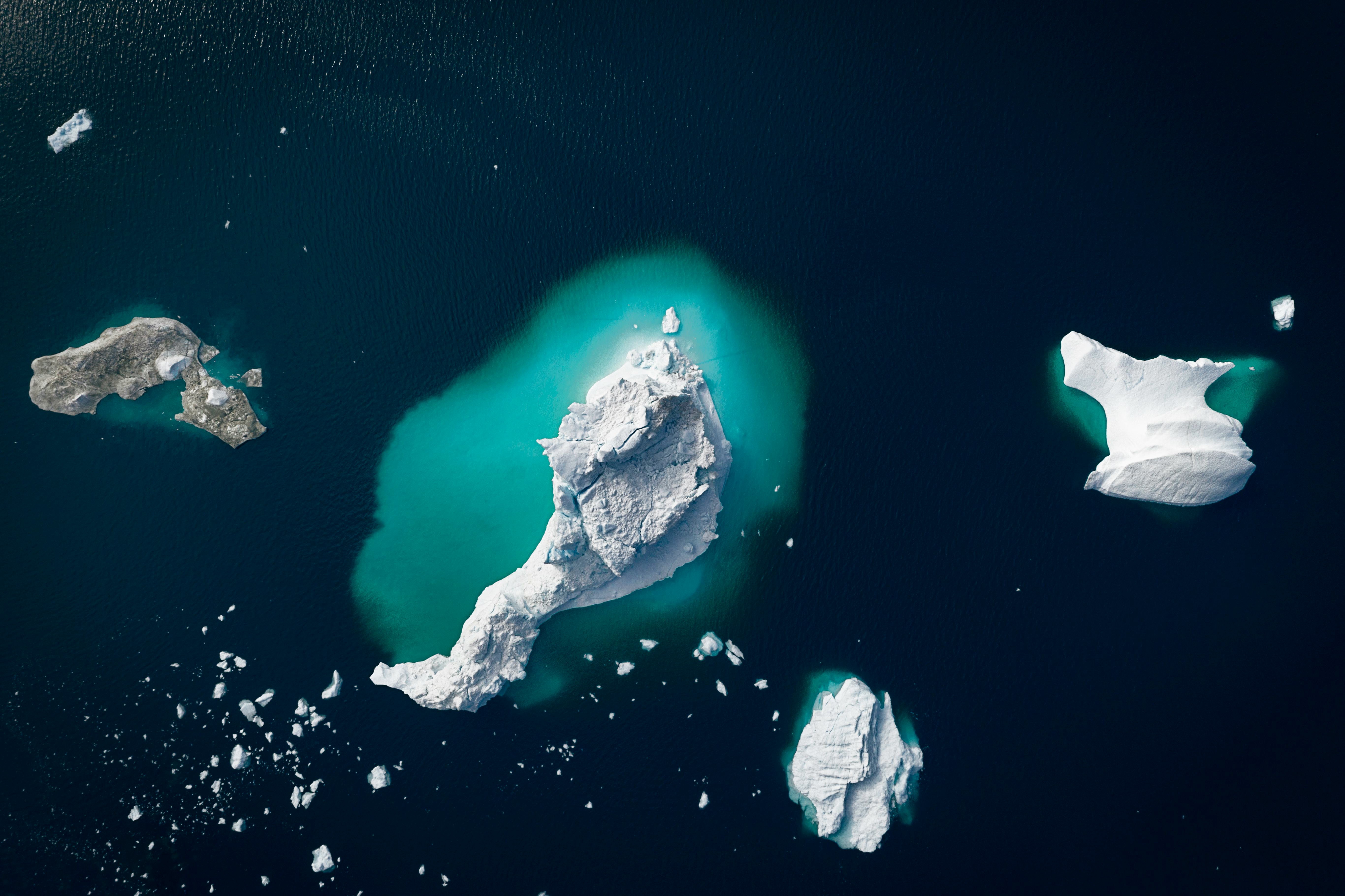
More than seven years ago, world leaders gathered in Paris and made an ambitious, but necessary plan to save the planet from our own folly — human-induced climate change, specifically.
That December 2015 plan became known as the landmark Paris climate agreement. All subsequent climate change pledges and UN climate conferences have followed the Paris agreement’s goal of limiting future global warming to “well below” 2 degrees Celsius (and ideally 1.5 degrees Celsius).
The Paris agreement settled on 1.5 degrees as a key tipping point, which humans should not exceed if we want to avoid the worst outcomes of global warming. To limit global warming to 1.5 degrees would require wide-scale or “deep” decarbonization efforts across the globe — in other words, a transition away from a global economy dependent on carbon-emitting fossil fuels.
But a new report out of Germany suggests the specific goal of 1.5 degrees Celsius may already be out of our reach.
“Specifically we ask whether meeting the 1.5°C-goal of the Paris Agreement is plausible,” Jochem Marotzke, report co-author and director of the Max Planck Institute for Meteorology, tells Inverse.
Yet, the report authors also argue that the future climate trajectory is still uncertain — and therefore, the fate of our planet is still very much in our hands. The University of Hamburg’s Climate Futures Outlook report was published on Wednesday.
The report analyzed various physical processes as well as “social drivers” of global warming to draw six key findings.
6. 1.5 degrees isn’t “plausible” anymore
The study assesses ten key “social drivers” of global warming. These are factors that could either undermine the Paris agreement’s decarbonization goals or support them, like whether companies shift away from fossil fuels or climate protests.
Social factors undermining the Paris Agreement include:
- Corporations’ responses
- Human consumption patterns
Social factors supporting the Paris Agreement include:
- Climate litigation
- UN governance (like climate conferences)
- Fossil fuel divestment
- Climate protests
- Knowledge production (i.e., shared knowledge around climate change actions)
- Climate regulation
- Transnational initiatives
One factor — the media — was ambivalent and both undermines and supports the Paris Agreement depending on the kind of media outlet reporting on climate change.
Taking all these factors into consideration, the report concludes that “deep decarbonization” is not plausible by 2050, which means the Paris Agreement’s goal of limiting global warming to 1.5 degrees is effectively dead in the water — just seven years after the agreement was signed.
“But if you look at the development of social processes in detail, keeping global warming under 1.5 degrees still isn’t plausible,” says report co-author and University of Hamburg sociology professor, Anita Engels, in a press release.
Yet, the Paris Agreement’s next tipping point — to keep global warming under 2 degrees Celsius — may still be achievable depending on how society changes (or does not) in the coming years.
“We state that limiting the global temperature rise to well below 2 degrees Celsius can become plausible if ambition, implementation, and knowledge gaps are closed,” Marotzke says.
One such knowledge gap includes the spread of Indigenous traditions of land management, which experts say are crucial to achieving climate change goals and saving biodiversity
5. Covid-19 and Russia’s invasion of Ukraine have an uncertain impact
Two major global events — the Covid-19 pandemic and Russia’s invasion of Ukraine — have shaken up the climate change trajectory, but experts aren’t sure yet where the pieces will fall.
On one hand, socioeconomic recovery programs to boost the global economy post-Covid seemed to have locked us into an, even more, fossil fuel-dependent future, but future outbreaks could impact global production and consumption.
Similarly, although there were initial concerns about the European Union turning toward coal as a result of weaning itself off Russia’s natural gas supply, it’s also possible that the long-term effects of the war could boost the EU’s green energy goals by making it energy independent.
4. Some factors might not impact global warming as much as you think
Scientists have raised alarm bells in recent years about the rate of polar ice melt and Arctic sea ice loss. While the melting of the Arctic is surely a concern for sea level rise and other climate reasons, the report authors state it will “barely influence” surface temperature.
Two other hot-button issues — the thawing of the permafrost as well as deforestation in the Amazon — threaten to release carbon into the atmosphere. Permafrost refers to ground that is normally frozen year-round but is at risk of thawing due to global warming.
Indeed, the report says these factors will likely “moderately affect” global temperature — and our ability to achieve the Paris agreement — but may not be the doomsday scenario others have feared.
“We also show that the much-feared tipping points — while being serious concerns — are not quite the threat as which they are sometimes perceived,” Marotzke says.
The report states that the Planck temperature response — a feedback mechanism where warming leads to energy loss to space and cools the planet — can help keep the global temperature stable.
Marotzke adds “there is no danger that permafrost thaw will lead to an unstoppable climate instability.”
3. Three key consequences for failing to achieve 1.5 Celsius
The report hones in on three key consequences for failing to achieve the Paris Agreement’s key goal.
First, the bad news: “drastic” or “abrupt” changes to the polar ice sheet — such as in Antarctica and Greenland — are likely. Other research suggests polar ice melt may not only contribute to “ominous” sea level rise but also shift Earth itself.
The good news is that we likely won’t see such dramatic changes in Arctic sea ice or the Atlantic Meridional Overturning Circulation (AMOC). The AMOC is a series of ocean currents carrying warm water around the globe and is responsible for redistributing heat on planet Earth.
Second: Future developments will either limit or expand the deforestation of the Amazon. But the election of Brazilian president Luiz Inácio Lula da Silva — who has promised to tackle deforestation — is a promising sign.
Third: Future permafrost activity is uncertain, but as stated before, unlikely to lead to rampant global warming.
2. Our ability to achieve the Paris agreement hinges on social factors
In climate change conversations, we tend to focus on physical processes like extreme weather events or moonshot scientific innovations that could help capture carbon, but we forget that the power to achieve the Paris Agreement rests in our hands — and is not dependent on some future technology.
For example, the report hones in on the lack of implementation following UN climate conferences, despite ambitious “green” pledges by world leaders. But it’s still possible that climate protests will lead to major laws tackling climate change, for example.
Human agency has a large potential to shape the way climate futures evolve,” write the report authors.
1. How to sustainably adapt to climate change
Regardless of whether or not we achieve the Paris Agreement, climate change is happening right now, and we’re not doing enough to prepare communities to adapt.
The report puts forth a Sustainable Adaptation Plausibility Framework on ways we can plausibly adapt to climate change in a way that’s healthy for the planet. Some examples from the report include things countries are already doing — like using coastal dikes in Germany — and more transformational adaptations like the Dutch Sand Motor pilot, which uses nature-friendly methods to prevent the erosion of beaches.
What’s next — On its face, the report might seem grim, but the authors actually say it’s more of a mixed bag. Our climate future still remains within our control, but the road ahead will be daunting.
If we want to live up to even a shadow of the Paris Agreement’s promise, nothing short of global energy transformations will suffice. We can’t have our cake — continue churning out fossil fuels — and live in a world with a stable climate.
“I believe it is important that people do not fool themselves and that they are aware of the enormous magnitude of the task to re-build energy systems globally,” Marotzke concludes.







